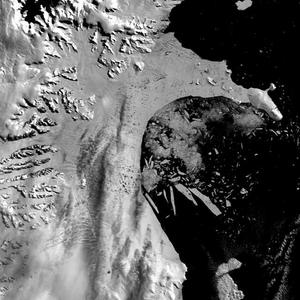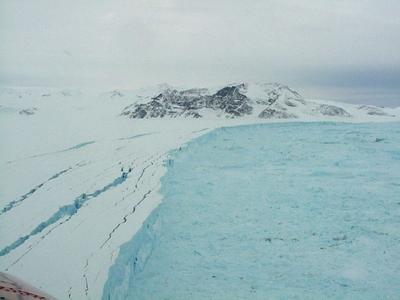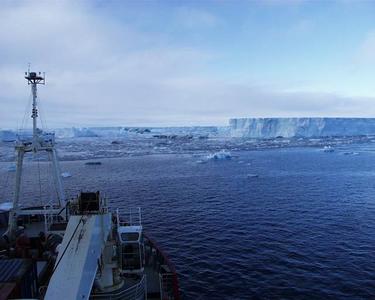18 December, 2004
Do you think something like "Day After Tomorrow" could happen?
I don't think things will happen as fast like they do in the movie, but some things like them might happen over a long period of time. For example, scientists here are studying whether or not the West Antarctic Ice Sheet (WAIS) is melting. If it does, it would raise the world's sea level 15 feet. This is enough to flood many cities like New York, Miami, and New Orleans. The East Antarctic Ice Sheet (EAIS) is much bigger than the WAIS. If both the ice sheets melted, the sea level would raise about 200-300 feet! This is enough to flood many, many more cities and many islands. You don't have to worry about that right now though, it would take a very, very long time to happen and it would not happen in your lifetime...in fact, it might take several centuries for something like that to happen.
One event that makes some scientists think the WAIS might melt is that in 2002, the Larsen-B Ice Shelf, located on the Antarctic Peninsula, collapsed. The peninsula is part of East Antarctica, where the Larsen-B Ice Shelf was located. Scientists believe the ice shelf was a remnant of a time 12,000 years ago when there was a lot more ice here. In little more than two months it was completely gone. Because it collapsed in such a short period of time, scientists were alarmed, and they think it could have been caused by global warming.
An important difference between an ice shelf (like the Larsen-B Ice Shelf) and an ice sheet (like the WAIS and EAIS) is that a shelf floats on the ocean and an ice sheet rests on land. When an ice shelf breaks up and melts, it does not affect the level of the oceans because it is already in the ocean. You can demonstrate this by melting a floating ice cube and comparing the water level before and after the ice melts. The water level does not change. However, when an ice sheet breaks up or melts, it is water that moves from land to the ocean, and it will raise sea levels worldwide. The WAIS contains enough water to raise sea levels about 15-16 feet around the world! The good news is that the EAIS, which is many times larger, appears to be stable. If it melted, it would raise sea levels another 200-300 feet!
Attached are some satellite photos of the Larsen-B Ice Shelf during the breakup and a picture of what the area looked like from the ground before it broke up...all that flat ice is now open sea!
Science can be a very interesting subject because there are usually different theories about what will happen and why. For example, some scientists think that the Antarctic ice sheet may actually expand if there is a period of global warming. They believe that there may be more precipitation in Antarctica due to the warming; however, the temperatures will still low enough for most of it to fall in the form of snow, which would increase the size and thickness of the ice sheets. Only more research by the scientists will be able to help answer the question.

1: January 31, 2002 NASA photograph of Larson-B Ice Shelf

2: Februray 17, 2002 NASA photograph of Larson-B Ice Shelf

3: February 23, 2002 NASA photograph of Larson-B Ice Shelf

4: March 5, 2002 NASA photgraph of Larson-B Ice Shelf

5: Face of Larson-B Ice Shelf as it is breaking up - notice all the crevasses that have opend up along the face.

6: A research vessel's view of Larson_B Ice Shelf during the breakup.

7: This is all open sea now!
Contact the TEA in the field at
.
If you cannot connect through your browser, copy the
TEA's e-mail address in the "To:" line of
your favorite e-mail package.
|
